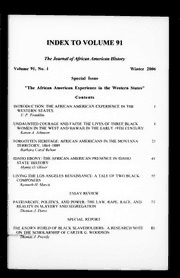
ERIC EJ901137: Working with Latina Adolescents in Online Support Groups PDF
Preview ERIC EJ901137: Working with Latina Adolescents in Online Support Groups
1 Working With Latina Adolescents in Online Support Groups Debra J. Archuleta, Linda G. Castillo, and Jennifer J. King Texas A&M University Preparation of this article was funded by the U.S. Department of Education, Gaining Early Awareness and Readiness for Undergraduate Programs Grant. Working with Latina 2 Abstract Latina students face many challenges that can lead to school dropout. Although school counselors have the skills and training to provide counseling and guidance to students at-risk for dropping out of school, they are often placed in positions where their role is primarily administrative. This paper describes an online support group developed by two rural school districts and a university counseling program in order to address the needs of Latina students. Working with Latina 3 Working With Latina Adolescents in Online Support Groups Latinos are currently the largest racial/ethnic group in the U.S. with approximately 34% under the age of 18 (Rameriz & De la Cruz, 2002). Although the number of Latino students graduating from high school is increasing, high school dropout rates continue to remain high (Fry, 2003). According to the U.S. Census Bureau (2003), the national Latino high school dropout rate (21%) is more than twice the national average (10%). The under-education of Latinos has serious implications for the group's socioeconomic advancement as well as U. S. economic competitiveness. It is widely acknowledged that education is an important means to economic progress, especially given the increasing value of education and technological skills in the labor market (Lockwood & Secada, 1999). If current trends persist, there is a potential for the deterioration of an educated labor force, resulting in a decline of U.S. economic competitiveness, a loss in sales and profits, as well as a decline in the nation's tax base (Council of Economic Advisers, 2000). Clearly, this is a group that needs new and creative approaches in education in order to confront this potential crisis. Contributing Factors to Latino School Dropout The factors that contribute to Latino adolescent school dropout rates are well known to researchers (Hess, 2000). Factors such as lower socioeconomic status (National Center for Educational Statistics, 1996), recent immigration (Fry, 2003), and low achievement (Romo & Falbo, 1996) have been found in the literature to be related to school dropout. However, critics have challenged this research by stating that what is not known is why Latinos are twice as likely to drop out of high school when compared to other low-income minority students (National Center for Educational Statistics, 1995). Working with Latina 4 Furthermore, little is known about why U.S. born Latino students dropout at higher rates than immigrant Latinos or African American students (Hess, 2000). An explanation for Latino dropout rates is offered by researchers who have examined the psychosocial factors related to school dropout (Bernal, Saenz, & Knight, 1995; Ginorio & Huston, 2001; Monsivais, 1990). One possible contributing factor to the high dropout rates among Latino students is the school environment. A survey done by Monsivais (1990) found that many teachers, even Latino teachers, felt that they were not prepared to teach Latino students. Moreover, teachers were offered few options for in-service trainings on how to work with students from different ethnic and racial backgrounds (Ginorio & Huston, 2001). Education remains focused on preparing teachers to work with students who come from middle-class backgrounds, speak English, and have resources available outside of school (Gebhard, Austin, Nieto, & Willett, 2002; Yasin, 2000). Another roadblock often faced by Latino students is teachers’ biases or misconceptions of the Latino culture. A teacher being influenced by stereotypes may not be as encouraging to Latino students or may fail to reach out to Latino parents (Ginorio & Huston, 2001). These biases can also emerge in the form of low expectations of students and unfair criticism of the Latino culture and students’ abilities (Bernal, et al., 1995; Pew Hispanic Center, 2004). Bernal et al. (1995) found that low self-esteem is another factor that is related to Latino dropout rates. They found that devaluation of their ethnic group was related to low self-esteem of Latino students. Perceived devaluation was also related to Latino Working with Latina 5 students feeling marginalized. Furthermore, Latino students who incorporated these negative views had lower achievement in the classroom. Although academic success for Latino students has been related to experiencing expressions of warmth, caring, and personal regard from teachers and counselors (Ginorio & Huston, 2001), few Latino students seek help from school counselors. Latino students often do not feel comfortable seeking help from a school counselor (Ginorio & Huston, 2001). One study found that Latinos are less likely to use school counselors than Caucasian students. When Latino students did meet with a counselor, it was typically for non-academic related concerns, such as discipline (Huston, Ginorio, Frevert, & Bierman, 1996). The study also found that due to school counselors’ low expectations of Latino students, counselors were less likely to place Latino students in college preparation classes. Although Latino students face many barriers to their educational success, Latinas1 face additional stressors because of their gender status. For example, research has shown that Latinas were more likely to feel unsafe at school and express more feelings of apprehension than their male counterparts (Smith, 1995). Feeling unsafe can be disruptive to the learning environment for Latinas. A study done by Haag (1999) found that Latinas were more likely to be the target of sexual slurs and insults on their intelligence than any other racial/ethnic minority group. Experiences such as these lead Latinas to feel disengaged from school (Ginorio & Huston, 2001). As shown in the literature, Latino students face many challenges that can lead to school dropout. Furthermore, Latinas are faced with additional stressors such as sexual harassment (Haag, 1999). Clearly, Latina students are in need of support and guidance 1 The term “Latina” is the female gender of the noun “Latino.” Working with Latina 6 to help them address barriers to their educational attainment. Although school counselors are trained in providing counseling and guidance to adolescents, unfortunately, they are often placed in positions where their role is primarily administrative and leaving little time for counseling students (McLeod, 2005; Paisley & McMahon, 2001). Given that Latina students face many stressors that may affect their educational persistence and the time constraints of many school counselors, the purpose of this paper was to describe the development and implementation of an innovative method using the internet as a means of providing group counseling for Latina adolescents located in two rural school districts. Development of the Online Support Group for Girls Program In 2002, a Gaining Early Awareness and Readiness for Undergraduate Programs (GEAR-UP) grant was awarded to a university in south Texas. The grant provided funding to work with two rural school districts near the Gulf Coast region of Texas. The primary goal of the GEAR-UP program is to facilitate the college enrollment of underrepresented students; therefore, various intervention programs were developed in order to best facilitate this goal. One program that was developed was the Online Support Group for Girls Program. Selection of the online support group members for the program was done in collaboration with the school counselors and a counselor educator from the Texas university. The counselor educator communicated with the school counselors by phone and email. School counselors were asked to identify Latina students who were having problems with school performance or were identified as "at-risk." “At-risk” was defined as students who were at risk of failing courses or dropping out of school due to Working with Latina 7 behavioral problems (e.g., inattentiveness in class, argues with authority, etc.). After identification of students, school counselors received parental consent for students to participate in the online support group. An online support group format was chosen because the distance of the rural school was located over 200 miles from the university where the group counselors were located. Before the group convened online, an American On-Line (AOL) Instant Messaging account was created. The AOL IM software was chosen because it is free and could be made easily accessible to each of the schools involved in the project. Screen names and passwords were set up by a graduate student assistant. The students were assigned passwords that would be simple and easy to remember, such as “project2003” and the students’ first names were used as screen names. The information was then disseminated to the university counselor educator and school counselors. The school counselors then provided each of the students with her username and password. Six graduate-level counselors, who were called Aggie Partners in this program, created a private chat room that was available only by invitation. Invitations to join the chat room were sent to the Aggie Partner’s assigned students, school counselors, and the counselor educator. The Aggie Partners each worked with a group made up of five Latina 8th grade students. The online group sessions were approximately 30 minutes long and met once a week. The issues that were covered in the group involved coping with daily stressors, peer relationships, and the overall well-being of the Latina students. Aggie Partners were provided live supervision by the counselor educator who was also a licensed counselor. Working with Latina 8 Case Examples The following section discusses several salient student issues that were observed in the groups. Although there were occasions that the Aggie Partners introduced a topic to the group, often the students brought their own concerns to share, which allowed the Aggie Partners to facilitate discussions on topics pertinent to the students' needs. Some of the issues that arose in the counseling groups were often reoccurring such as relationships with peers and boys, pressures to have sex, apprehension about college, financial concerns, and academic performance. Relationship with Peers and Boys One important concern that was discussed almost every session in the support group was relationships with peers and boys. The group members seemed to trust each other and talked openly about expectations and fears about dating boys and peer pressure to have sex at a young age. Relationships with same-sex peers were also important for the group members to discuss with each other. They talked about how to handle a situation in which a friend may have betrayed them or was not talking to them for an unknown reason. The group members shared their opinions openly and seemed willing to critique other members. Members were also supportive of each other when appropriate. Below is a sample conversation about the expectations from peers (student names have been replaced with pseudonyms; original font and text used by group members is shown). Teresa: b/c i hate when people talk bout u even though they don’t know u Aggie Partner Amanda: yeah...that's very frustrating Teresa: they judge u by how u dress not by your personal life Working with Latina 9 Mary: People always think iam some crazy pot head just cause iam punk Aggie Partner Amanda: teresa- do you find people judging by what you dress like too? Mary: YES IT DRIVES me crazy Aggie Partner Amanda: mary- so they don't get to know you first? Mary: no Aggie Partner Amanda: man...that's annoying Teresa: just b/c i wear nothing but name brand close every body thinks in rich Mary: My mom wont let me wear the kinda pants i want because she doesnt want people to have bad thought about me Aggie Partner Amanda: sounds like clothes are a BIG issue at school Mary: I dont care what other people wear. I wear what I want Aggie Partner Amanda: but it just bothers you when people judge you for what you're wearing Mary: Well.......kinda Aggie Partner Amanda: teresa- it bothers you that people assume that you're rich? Teresa: yeah. i hate that Pressure to have Sex Issues around sex and pressures to have sex were a common theme in many of the online support groups. Although group members were hesitant about bringing up the topic of sex, the group counselors were able to create a safe space for the members. For example, group counselors shared with the members their own experiences of Working with Latina 10 curiosity about sex when they were at the same age. Counselor self-disclosure allowed the group members to share personal experiences with sex such as fears of pregnancy. Below is an example of the third author’s online support group: Carla: i know for a fact James don’t want sex only he wants to go on a straight long relationship with me he talked to me last week i spent the weekend with him Aggie Partner Jennifer: Like, it is good to explore options when you are young... Carla: yeah it is Aggie Partner Jennifer: and to see what their expectations are for a relationship... and if their actions match their words Carla: yeah Carla: cause I’m having a Quinceanera2 I told him not to do stuff that is not good Julia: aaaahhhhh Aggie Partner Jennifer: hmm? Carla: what are you thinking Jennifer cause you seem to be saying hmm???? Aggie Partner Jennifer: not to do stuff for your b-day? like what? Julia: what do u mean Carla: what do you mean Aggie Partner Jennifer: [do you mean] push to have sex . . . Carla: not to do things that pops to his mind with other girls he does Julia: ohhh Carla: cause ive talked to him about this before and he said i’m not gonna tell nobody we can keep it on the down low and i said no and he said we dont have to and i said i dont want to and he said well we can wait 2A Quinceanera is a young Latina woman's celebration of her fifteenth birthday.
The list of books you might like

Mind Management, Not Time Management

Believe Me

The Subtle Art of Not Giving a F*ck

The Sweetest Oblivion (Made Book 1)

ZEN y ARTES MARCIALES

The PISA Effect on Global Educational Governance

Avertissements Agricoles - Grandes cultures - Ile de France - 2006 - 14
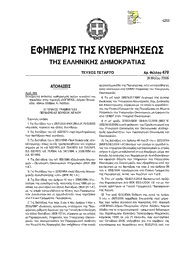
Greek Government Gazette: Part 4, 2006 no. 479

Fundamentals of Risk Management: Understanding, Evaluating and Implementing Effective Enterprise Risk Management

Hoard's Dairyman 2010: Vol 155 Index
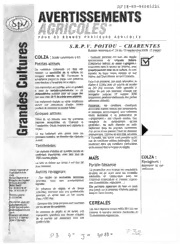
Avertissements Agricoles - Grandes cultures - Poitou Charentes - 2006 - 24

DTIC ADA520646: War Gaming: Space Perspective
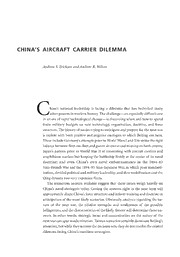
DTIC ADA519352: China's Aircraft Carrier Dilemma

Japp, Andrea H. - Sang Premier
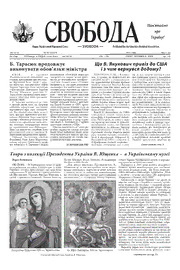
Svoboda-2006-49

Byron Alexis Mullo Naula
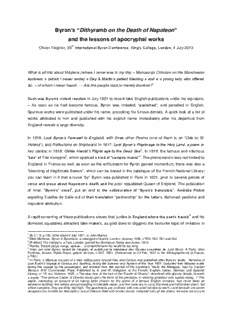
Byron’s “Dithyramb on the Death of Napoleon and the
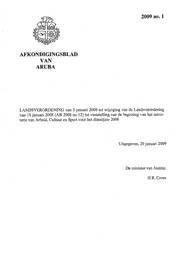
Afkondigingsblad van Aruba 2009 no. 1

Bölgesel Gelişme ve Bölgeler Arası Gelişmişlik Farkları

Elements of Music (Wooden Books Gift Book)



